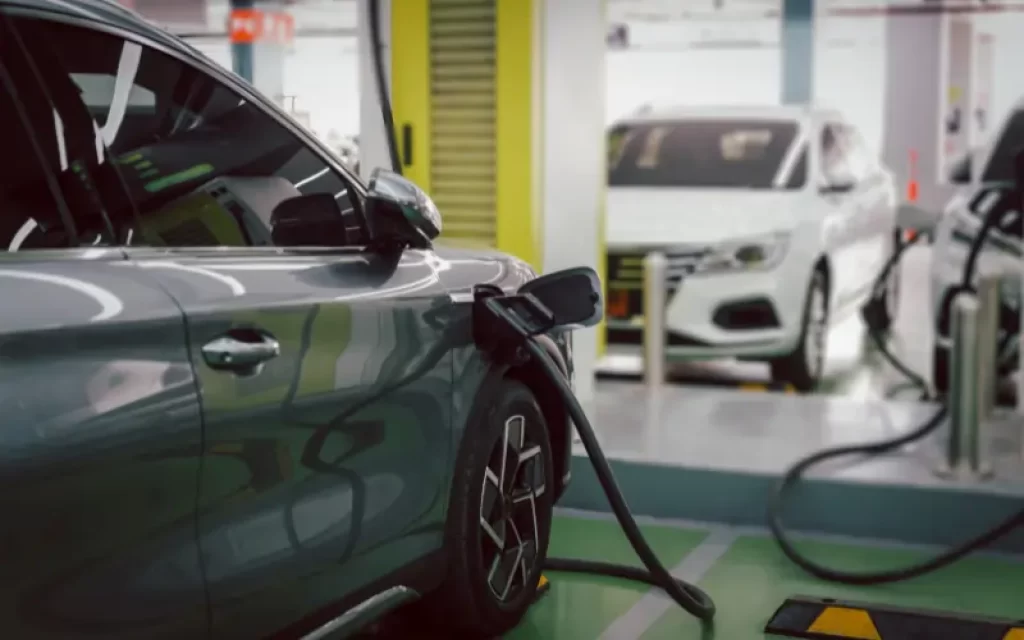
What is a Driving Range?
Driving range refers to the distance an electric vehicle (EV) can travel on a single charge. Several factors impact an EV’s range, affecting its usability and convenience for drivers. Let’s examine some key Factors that affect total Driving Range, based on the information:
| Factor | factors that Affect total Driving Range |
|---|---|
| Battery Capacity | Higher capacity = longer range |
| Vehicle Weight | Heavier vehicles consume more energy |
| Driving Speed | Extreme temperatures affect the range |
| Terrain and Elevation Changes | Uphill driving consumes more energy |
| Climate Conditions | Aggressive driving decreases the range |
| HVAC Usage | Heating or cooling demands power |
| Driving Style | Aggressive driving decreases range |
By considering factors that Affect total Driving Range, EV owners make informed decisions regarding route planning, charging locations, and understanding their vehicle’s limitations. It’s essential to adapt driving habits to maximize the range and enjoy efficient and sustainable electric mobility.
Table of Contents
Factors that affect total Driving Range

Electric vehicles (EVs) are becoming increasingly popular due to their environmental benefits and cost savings on fuel. However, one crucial aspect that EV owners need to consider is the driving range. Several factors that affect total Driving Range, such as:
Battery Capacity
The battery capacity is a significant factors that Affect total Driving Range. The higher the battery capacity, the longer the vehicle can travel before requiring a recharge. Modern EVs have improved battery technologies, allowing for longer ranges. Refer to the table below for a comparison of some popular EV models and their corresponding battery capacities.
Also read: How Far Can an Electric Car Go on One Charge?
| EV Model | Battery Capacity (kWh) |
|---|---|
| Tesla Model S | 60 – 100 |
| Nissan Leaf | 40 – 62 |
| Chevrolet Bolt | 66 |
Terrain and Elevation Changes
Electric cars are gaining popularity for their environmental benefits. However, certain factors, such as terrain and elevation changes, can factors that affect total driving range:
Elevation Changes
When an electric car tackles uphill or downhill roads, it directly impacts its driving range. Uphill climbs require more energy as the car works harder against gravity, reducing range. Conversely, downhill descents can act as energy regenerators, extending the range by converting kinetic energy back into electrical energy.
Terrain Variations
Terrain variations, such as mountainous roads or rough terrains, can also affect an electric car’s driving range. Uneven surfaces and obstacles demand higher power output from the vehicle, consequently reducing its range. Therefore, it’s essential to consider the terrain layout when planning longer trips with an electric car.
Also read: EVs with the Longest Driving Range, Ranked
Understanding these factors allows electric car owners to make informed decisions, plan efficient routes, and manage their driving range effectively. By factoring in elevation changes and terrain variations, electric car drivers can optimize their driving experience and maximize the potential of their vehicles.
Driving Speed
Driving speed is a crucial factor affecting the driving range of electric cars. Accelerating to high speeds consumes more energy, leading to reduced mileage on a single charge. Let’s explore this further with insights from Arnold Clark’s article on electric car driving range factors1.
When driving at high speeds, air resistance becomes significant. The faster you go, the more energy is required to overcome this resistance. According to Arnold Clark, increasing speed from 50 mph to 70 mph can decrease an electric car’s range by up to 30%. Therefore, maintaining a steady speed within legal limits can optimize efficiency.
Temperature and Climate Control
Extreme temperatures, both hot and cold, can affect an electric car’s battery efficiency. High temperatures increase battery capacity loss, while cold temperatures reduce battery performance. It’s crucial to consider temperature control to optimize the battery’s lifespan and driving range.
Heating and Cooling Systems
Using heating or cooling systems in an electric car impacts its energy consumption. Electric heaters tend to draw power from the battery, leading to reduced driving range. Similarly, air conditioning systems can affect the car’s battery life. Employing these systems judiciously helps maintain range and maximize efficiency.
Efficiency of Accessories
When it comes to electric cars, maximizing driving range is key. One often-overlooked aspect is the impact of accessories. In a recent study, several factors that affect total driving range were identified as influential. Let’s explore how you can optimize efficiency and extend your electric car’s range.
1. Air Conditioning and Heating
Using air conditioning or heating significantly drains battery life. Pre-conditioning while connected to a power source can help minimize the impact. Utilize seat warmers and consider wearing appropriate clothing to reduce reliance on temperature control.
2. Lights and Electronics
Efficient use of lights and electronics is crucial. LED lights consume less energy compared to traditional bulbs. Avoid leaving electronic devices charging while driving, as this added load can affect range.
3. Aerodynamics and Tire Pressure
Maintaining aerodynamic efficiency is paramount. Reduce drag by keeping windows closed and removing unnecessary roof racks. Adequate tire pressure can also minimize resistance, leading to better mileage.
4. Regenerative Braking
Make the most of regenerative braking systems. By converting braking energy into usable electrical energy, you can recharge the battery on the go and enhance overall efficiency.
5. Excessive Speed and Aggressive Driving
High speeds and sudden accelerations significantly impact range. Maintain a consistent speed and embrace a more relaxed driving style to optimize power consumption.
Driving Behavior
When it comes to maximizing an electric car’s driving range, the way we drive plays a crucial role. Understanding the impact of driving style is essential for optimizing efficiency and getting the most out of your electric vehicle. Let’s explore how different factors influence an electric car’s range.
- Acceleration and Deceleration
- Speed
- Avoiding Excessive Weight
- Efficient Use of HVAC
- Route Planning
HVAC
The rise of electric vehicles (EVs) brings about new considerations, including how HVAC systems affect their driving range. Heating, ventilation, and air conditioning (HVAC) play a crucial role in an EV’s energy consumption. Factors like temperature control and thermal management can significantly influence the range of an electric car.
Running the HVAC system on maximum power can drain the battery faster, reducing the driving range of an electric car. It is advisable to manage HVAC usage judiciously, adjusting settings and utilizing energy-saving modes when possible. Such practices help conserve battery power and extend the overall driving range.
In conclusion, understanding the impact of HVAC systems on an electric car’s driving range is essential for maximizing efficiency and convenience. By adopting smart temperature control strategies, utilizing preconditioning, and maintaining proper thermal management, electric vehicle owners can optimize their driving experience while preserving battery life.
Remember, balancing cabin comfort with energy efficiency is crucial when utilizing HVAC systems in electric cars. Stay informed, take advantage of advanced controls, and make conscious decisions to ensure a smooth and eco-friendly journey for your electric vehicle.
Road Conditions
Driving on rough or unpaved roads increases rolling resistance, which requires more energy from the battery. Opting for smoother roads can help maximize the EV’s range.
Below is a table summarizing the impact of these factors on an EV’s driving range:
| Factors That Affect Driving Range | Impact on EV Range |
|---|---|
| Battery Capacity | Larger battery pack = Longer range |
| Terrain and Elevation Changes | Higher speeds increase aerodynamic drag, reducing the range |
| Driving Speed | Extreme temperatures and HVAC usage decrease the range |
| Temperature and Climate Control | Use of headlights, infotainment systems, etc. drains the battery faster |
| Efficiency of Accessories | Rough or unpaved roads increase rolling resistance, reducing the overall range |
| Driving Behavior | Aggressive driving, rapid acceleration, and frequent braking decrease range |
| Road Conditions | Rough or unpaved roads increase rolling resistance, reducing overall range |
Understanding these factors is crucial for maximizing the driving range of an electric vehicle. By considering them and adopting efficient driving habits, EV owners can make the most of their eco-friendly and cost-effective mode of transportation.
FAQ’s
-
Do electric vehicles have difficulty driving uphill?
Electric vehicles typically have no difficulty driving uphill. The torque delivered by electric motors is usually higher than that of internal combustion engines, allowing EVs to handle inclines with ease.
-
Can electric cars get more range if driven more slowly?
Yes, driving an electric car at a slower speed can result in increased range. Slower speeds reduce energy consumption, allowing the battery to last longer and increase the overall driving range of the vehicle.
-
Do electric cars lose range over time?
Yes, electric cars generally lose range over time due to gradual degradation of the battery pack. Factors like usage, temperature, and charging habits can influence the rate of this degradation. Regular maintenance and proper charging practices can help mitigate the loss.
-
What is the range of an electric car?
The range of an electric car can vary widely depending on factors such as battery capacity, driving conditions, speed, temperature, and accessory usage.
-
When will electric cars be able to drive 1000 miles?
The ability for electric cars to drive 1000 miles on a single charge will depend on advancements in battery technology, charging infrastructure, and overall efficiency. While it may be difficult to predict an exact timeline, ongoing advancements suggest it could happen within the next decade or two.
-
What is the maximum range possible for an electric car?
The maximum range possible for an electric car varies depending on the model and battery capacity, ranging from about 100 miles to over 400 miles on a single charge.
-
How well do electric cars perform in the mountains?
Electric cars generally perform well in the mountains due to their instant torque and regenerative braking. However, their range can be slightly affected due to the increased energy demand while climbing steep gradients.
-
Why do electric cars do badly on the highway?
Electric cars typically do not perform as well on the highway compared to city driving due to factors such as increased wind resistance at higher speeds and the drain on batteries caused by sustained high power demands.







